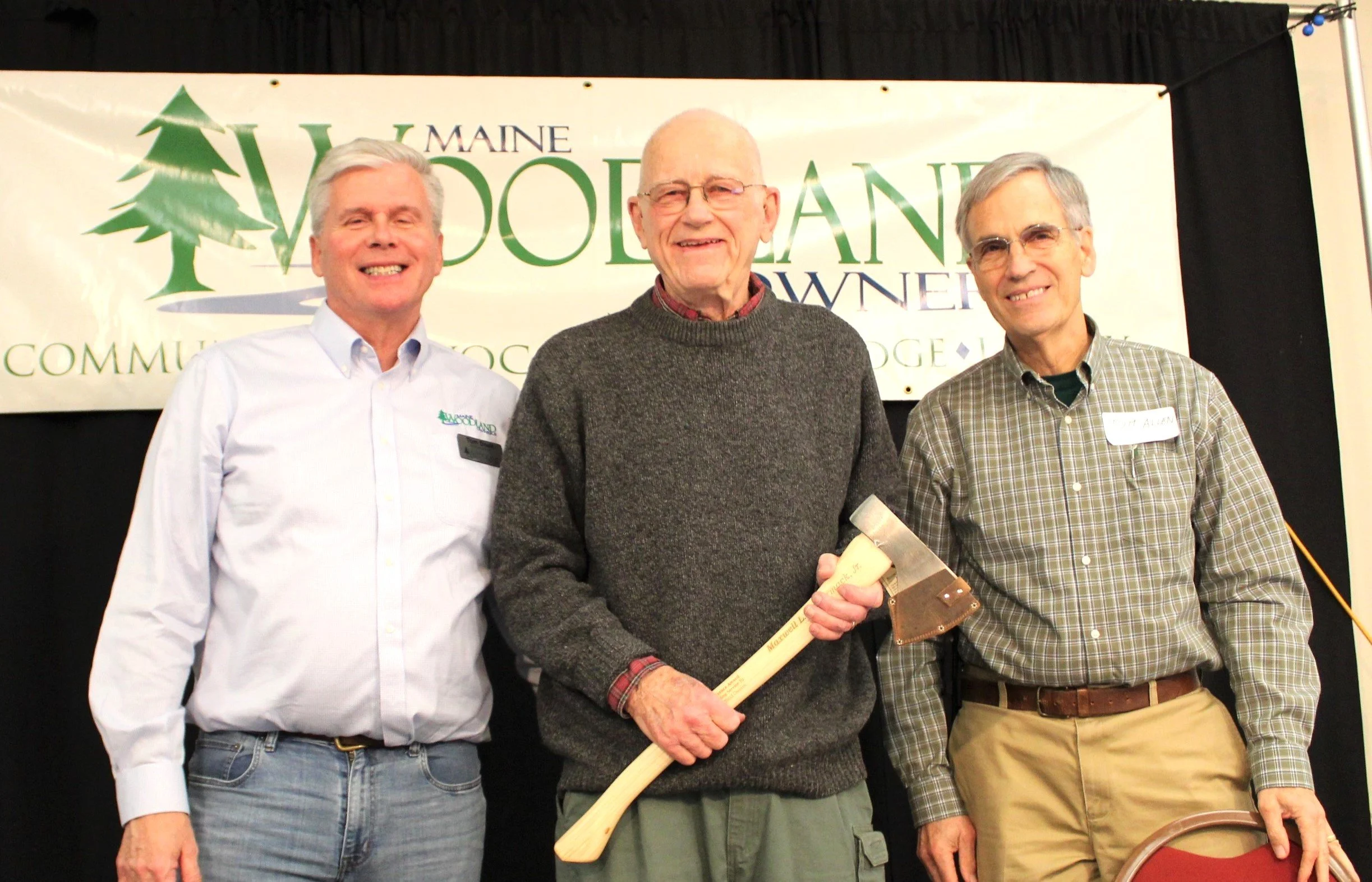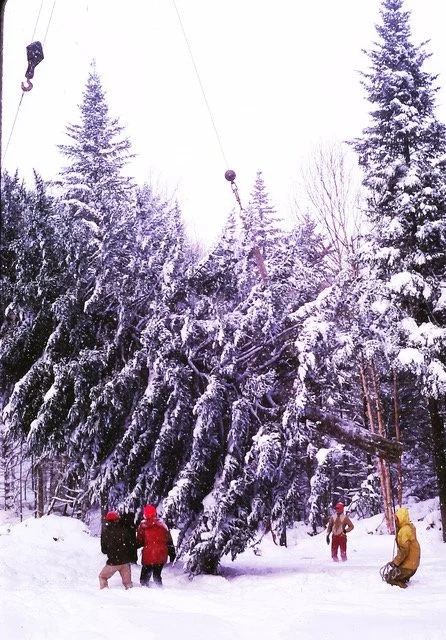On March 11, 2025 Max McCormack passed away at age 90. Among many roles, Max was a contributor to Maine Woodlands, most notably, the originator of the feature “Practical Silviculture".”
Read MoreMax McCormack writes about the founder of Maine Woodland Owners (previously SWOAM), Duncan Howlett, and McCormack’s personal memories of Howlett and the reason he decided to start the organization.
Read MoreGrowing the National Christmas Tree is a rich experience. In 1965, Max McCormack had the opportunity to prepare that year’s tree for transport to Washington, DC.
Read MoreMax McCormack discusses the history of how the US moved from wild grown to plantation grown Christmas trees over the past century.
Read MoreMaine used to be the “axe capital of the world”. Oakland, ME was the center of the axe manufacturing for over 100 years and produced some of the highest quality tools that today are very collectible.
Read Moreby Lloyd C. Irland
(This is the seventh article in a series by Lloyd C. Irland, originally published in the May issue of Maine Woodlands).
Most careful readers of Maine’s forest history know that the masts for the USS Constitution, “Old Ironsides,” came from the Maine woods. Several individuals prominent in her career were also from Maine. Constitution is the world’s oldest commissioned warship still afloat; she now rests in drydock at Charlestown for a restoration, due to be completed in 2017. Here, briefly, is “the rest of the story”.
Read Moreby Llyod Irland
(This is the sixth article in a series by Lloyd C. Irland, originally published in the April issue of Maine Woodlands).
Reports by explorers Champlain, Weymouth, and Captain John Smith burst with superlatives describing the size of the trees they found on New England’s shores. They note their significance to the Navy’s needs, and the disadvantages should somebody else’s empire appropriate them. During the 17th and 18th centuries, the Lords of the Admiralty were being squeezed by their Baltic timber suppliers.
Read Moreby Lloyd C. Irland
(this is the fifth article in a series by Lloyd C. Irland, orginally published in the February 2016 issue of Maine Woodlands).
Our history books talk of periodic peasant revolts that shaped history, toppling dynasties, exacting concessions, or, more often, ending in bloody suppressions and changing nothing. Grievances over the forests played a role in many of them. We’ve seen the complex evolution of common rights in medieval Europe’s forests. These rights became increasingly unworkable and even dysfunctional in times of prosperity, widening trade, urbanization, and increasing population. About the year 1000 . . .
Read Moreby Lloyd C. Irland
(This is the fourth in a series of articles by Lloyd C. Irland, and was initially published in the December issue of Maine Woodlands).
So far this series has noted the obsession of medieval lords with the deer, boar, and game birds of the forest. We’ve paid less attention to how the common folk of the villages used the forest for food. I was tempted to call this, “Forest and Kitchen,” but then realized the people we speak of had no kitchens.
Read More(This article is the third in a series by Lloyd C. Irland, and was originally published in the November issue of Maine Woodlands).
In the Middle Ages, most farms consisted of scattered patches with rights to plow, graze pigs, cut wood, or harvest honey. A manor held by a minor lord might include several villages, each with a few dozen farms, tilled by villeins bound to the land . . . .
(The second article of a series by Lloyd C. Irland, this article was originally printed in the October issue on Maine Woodlands).
Medieval kings and feudal landholders tightly controlled rights to hunt on their land. Rules were detailed, making Maine’s book of hunting and fishing regulations look . . .
Read Moreby Llyod C. Irland
(This article is the first in a series, and was originally published in the September issue of Maine Woodlands).
Newspapers and magazines have been reminding us it’s the 800th anniversary of the Magna Carta, the “Great Charter” signed under duress by King John in 1215. It turns out that, in addition to protecting the traditional rights of the barons, it also created medieval forest rights that are still with us today.
Read More













